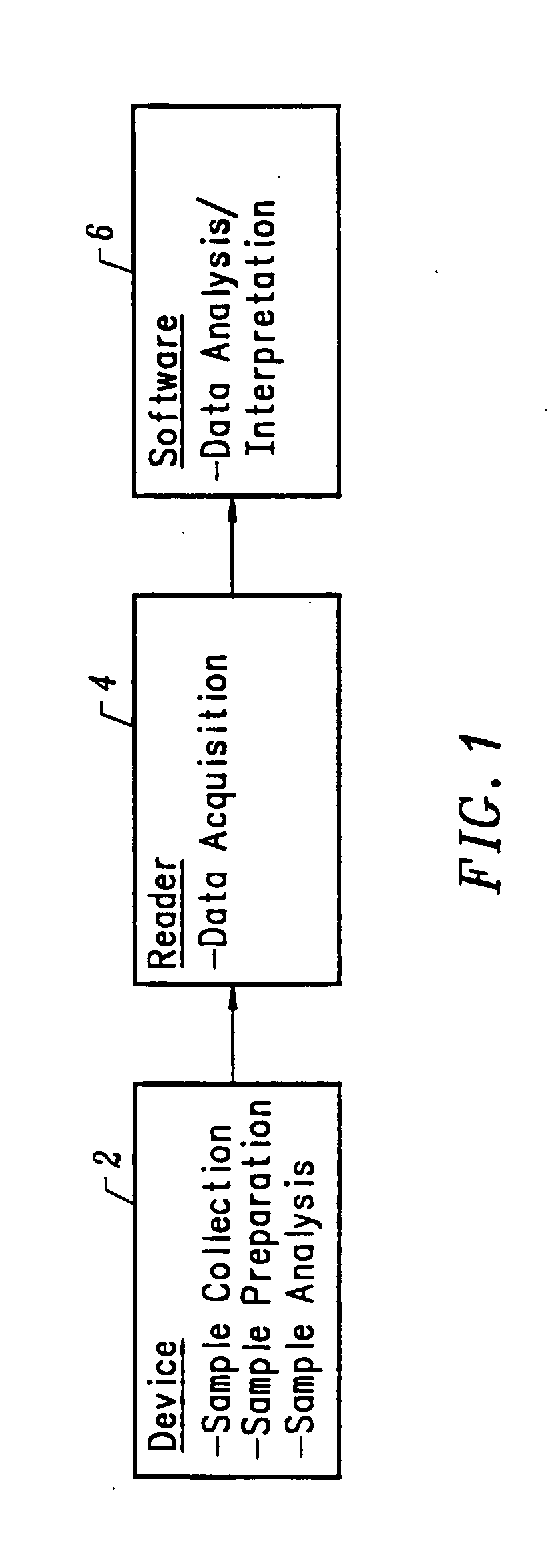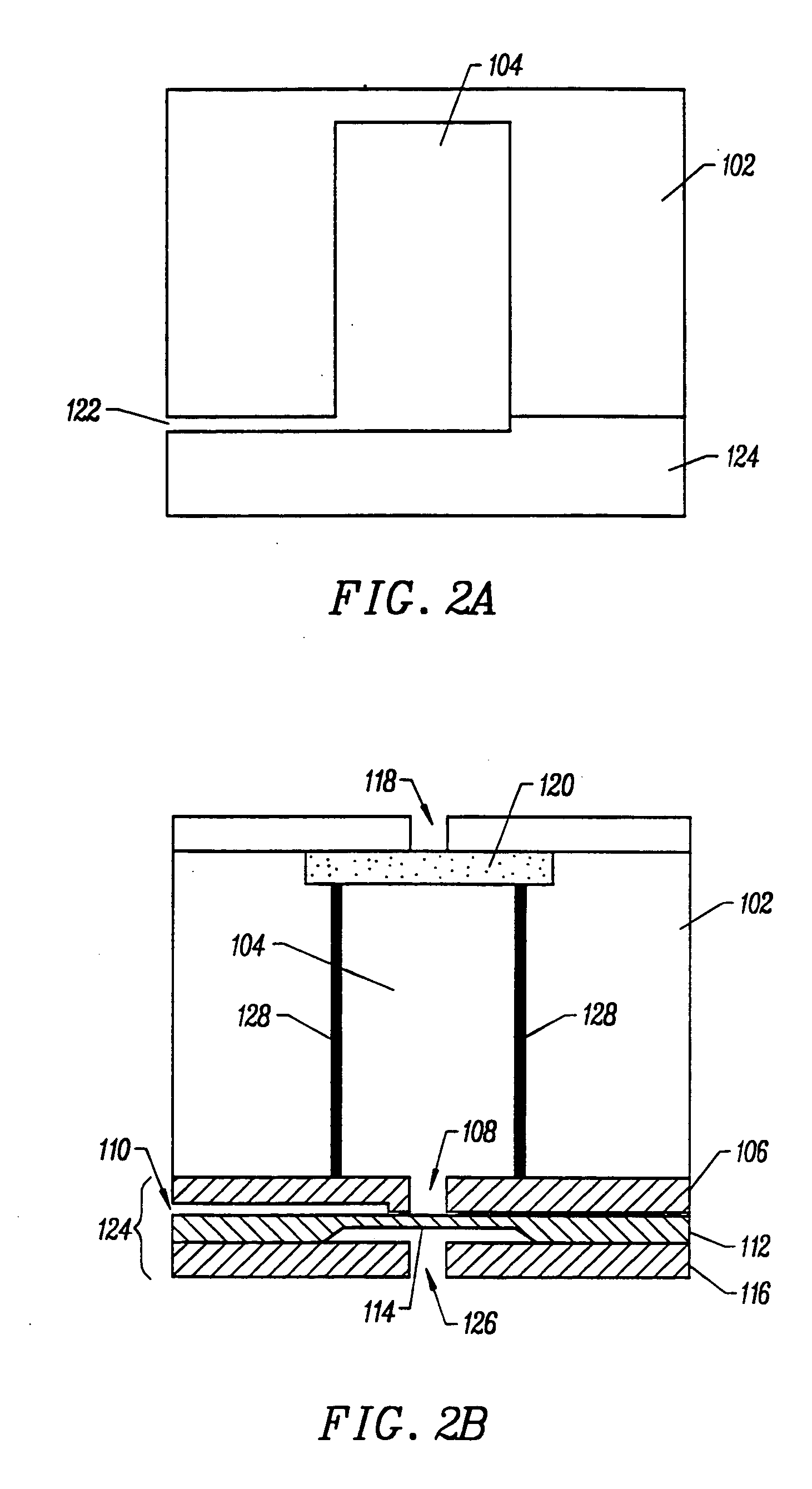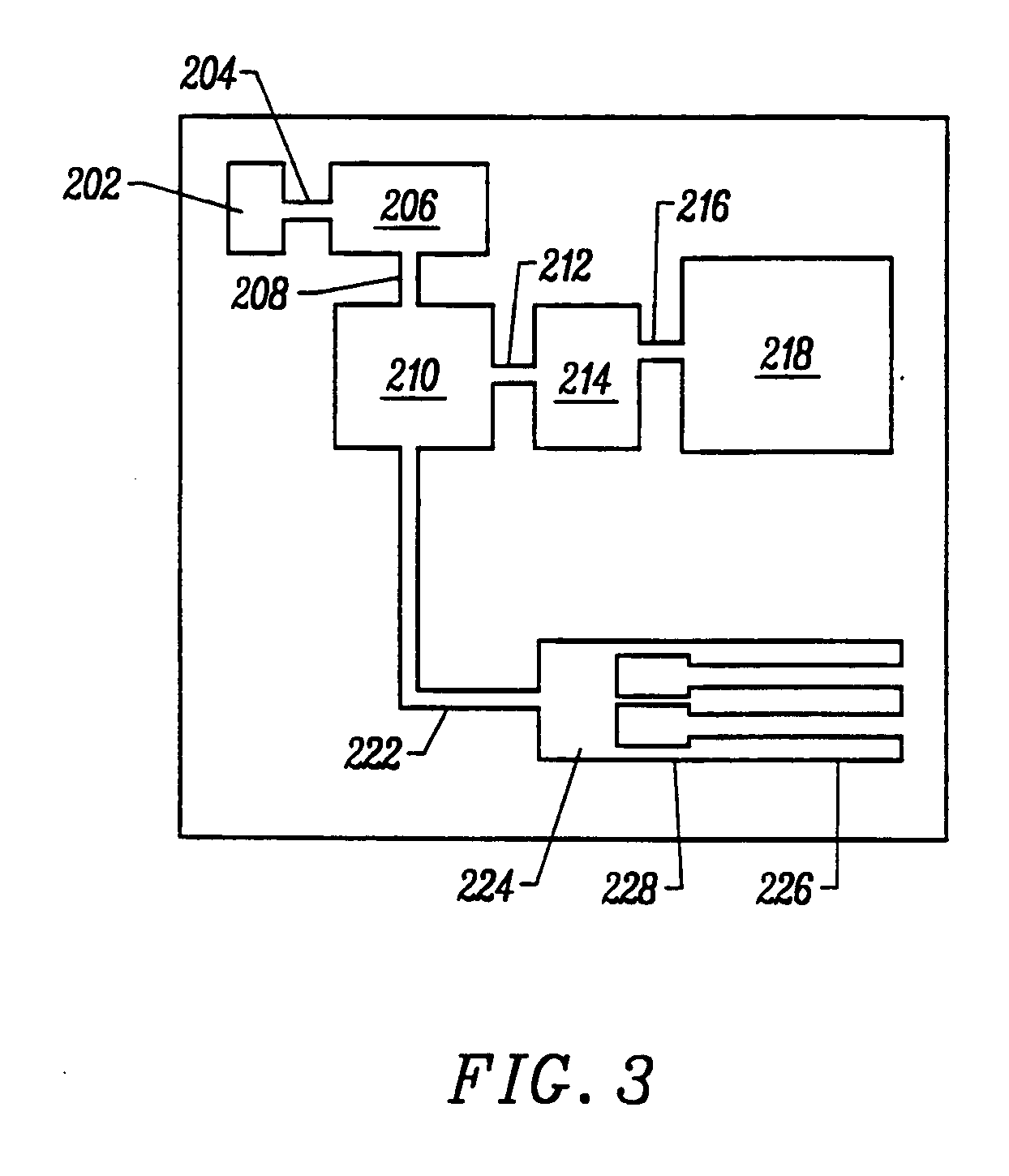Integrated nucleic acid diagnostic device and method for in-situ confocal microscopy
a nucleic acid and diagnostic device technology, applied in the field of integrated nucleic acid diagnostic device and in-situ confocal microscopy, can solve problems such as introducing a potential for error into the overall process
- Summary
- Abstract
- Description
- Claims
- Application Information
AI Technical Summary
Benefits of technology
Problems solved by technology
Method used
Image
Examples
example 1
Acoustic Mixing
[0152] The efficacy of an acoustic element for mixing the contents of a reaction chamber was tested. A 0.5″×0.5″×0.04″ crystal of PZT-5H was bonded to the external surface of a 0.030″ thick region of a planar piece of delrin which had cavity machined in the surface opposite the PZT element. An oligonucleotide array synthesized on a flat silica substrate, was sealed over the cavity using a rubber gasket, such that the surface of the array having the oligonucleotide probes synthesized on it was exposed to the cavity, yielding a 250 l reaction chamber. The PZT crystal was driven by an ENI200 High Frequency Power Supply, which is driven by a function generator from Hewlett Packard that was gated by a second function generator operated at 1 Hz.
[0153] In an initial test, the chamber was filled with deionized water and a small amount of 2% milk was injected for visualization. The crystal was driven at 2 MHz with an average power of 3 W. Fluid velocities within the chamber ...
example 2
RNA Preparation Reactions in Miniaturized System
[0156] A model miniature reactor system was designed to investigate the efficacy of miniaturized devices in carrying out prehybridization preparative reactions on target nucleic acids. In particular, a dual reaction chamber system for carrying out in vitro transcription and fragmentation was fabricated. The device employed a tube based structure using a polymer tubing as an in vitro transcription reactor coupled to a glass capillary fragmentation reactor. Reagents not introduced with the sample were provided as dried deposits on the internal surface of the connecting tubing. The experiment was designed to investigate the effects of reaction chamber materials and reaction volume in RNA preparative reaction chambers.
[0157] The sample including the target nucleic acid, DNA amplicons containing a 1 kb portion of the HIV gene flanked with promoter regions for the T3 and T7 RNA primers on the sense and antisense strands, respectively, RNA ...
example 3
PCR Amplification in Miniaturized System
[0160] The miniature polymeric reaction chamber similar to the one described in Example 2 was used for carrying out PCR amplification. In particular, the chamber was fabricated from a planar piece of poycarbonate 4 mm thick, and having a cavity measuring 500 m deep machined into its surface. A second planar polycarbonate piece was welded over the cavity. This second piece was only 250 m thick. Thermal control was supplied by applying a peltier heater against the thinner second wall of the cavity.
[0161] Amplification of a target nucleic acid was performed with Perkin-Elmer GeneAmp® PCR kit. The reaction chamber was cycled for 20 seconds at 94° C. (denaturing), 40 seconds at 65° C. (annealing) and 50 seconds at 72° C. (extension). A profile of the thermal cycling is shown in FIG. 9. Amplification of approximately 109 was shown after 35 cycles. FIG. 10C shows production of amplified product in the microchamber as compared to a control using a t...
PUM
| Property | Measurement | Unit |
|---|---|---|
| temperatures | aaaaa | aaaaa |
| width | aaaaa | aaaaa |
| width | aaaaa | aaaaa |
Abstract
Description
Claims
Application Information
 Login to View More
Login to View More - R&D
- Intellectual Property
- Life Sciences
- Materials
- Tech Scout
- Unparalleled Data Quality
- Higher Quality Content
- 60% Fewer Hallucinations
Browse by: Latest US Patents, China's latest patents, Technical Efficacy Thesaurus, Application Domain, Technology Topic, Popular Technical Reports.
© 2025 PatSnap. All rights reserved.Legal|Privacy policy|Modern Slavery Act Transparency Statement|Sitemap|About US| Contact US: help@patsnap.com



